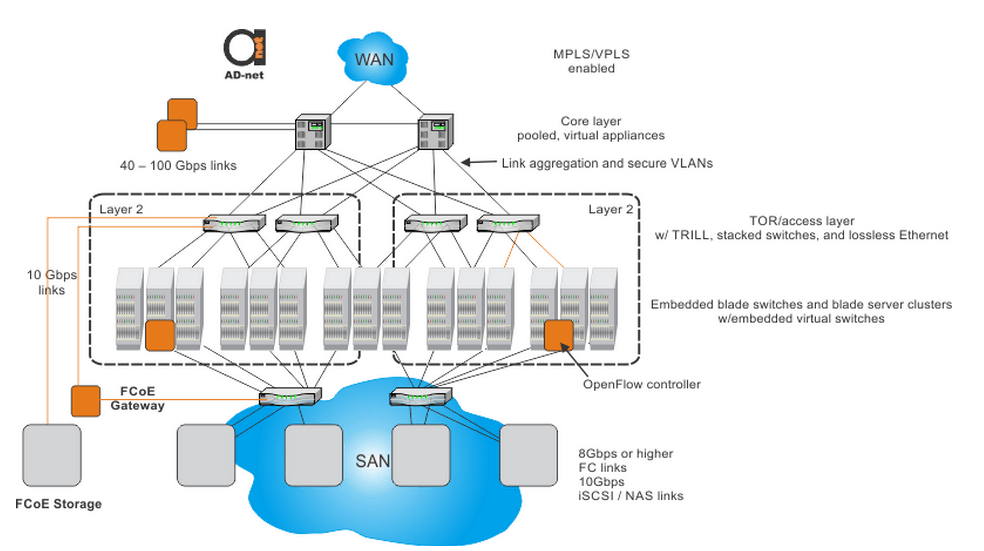Solving problems discussed in previous articles can be done with the help of fabric-based networks. There are many definitions of fabric, however we define it using following characteristics:
-
Network architecture is flatter than current networks
-
Backwards compatibility with Ethernet networks
-
Support of variety of different topologies
-
Improved performance, availability, scalability, and simplicity
-
Scalable low-cost links
-
Centralized management
-
Self-awareness and self-discovery in the network
VM (Virtual Machine) automation and mobility tasks are easier to deal with in fabrics network. While switch functionality migrates to the network edges, fabrics has tight integration within data center and its servers.
Figure 1 shows examples of solutions discussed before, in the system that follows open industry standards. Together with using flat design, this system implements low-latency two-tier design that increases performance. Demonstrated design allows to scale network with low costs. Total equipment amount is being decreased, simplifying overall design while reducing power costs. This design allows creating virtual overlay networks, on top of physical cables, using SDN. Network management, automated virtualization services, and agile network services building platform – these are some of the functions SDN is used for.
Figure 1. A modern data center network
Fabric network design is mostly processing data in the east-west direction. Another essential features include switch stacking, link aggregation, high bandwidth utilization, and big amount of redundant network paths. In addition, VM can be moved across different physical servers using Layer 2 domain. Network management is centralized and could be located either in server, or in dedicated network controller. Management is mostly automated, reducing risk of human error.
Fabric is a ready-to-go solution for cloud computing. Its cost is minimized, it has good level of flexibility and optimization, due to fabric that follows industry standards.


